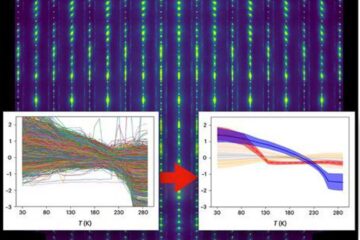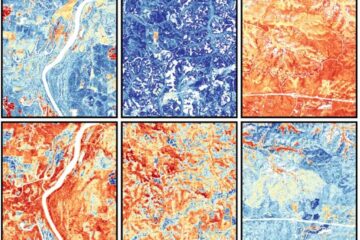The British National Space Centre and DMC join the International Charter ‘Space and Major Disasters’

In London on Tuesday, the British National Space Centre (BNSC) formally became a Partner Agency of the International Charter ’Space and Major Disasters’ on behalf of the Disaster Monitoring Constellation (DMC) Consortium.
This means BNSC will participate in the Consortium’s adherence to the Charter by performing certain functions during an initial period of two years. BNSC has already provided Project Manager support to previous Charter activations in liaison with ESA, including during the 2003 Soufrière Hills volcanic eruption in Montserrat in 2003 and following the Bhuj earthquake in India in 2001.
The International Charter ‘Space and Major Disasters’ is a joint initiative to put space technology at the service of rescue authorities in the event of major disasters. Each member agency has demonstrated its commitment for using space technology to serve humankind when it is most in need of assistance when disasters of both natural and human origin strike the world’s communities or wreak havoc on the environment. To date, the Charter has been activated more than 90 times.
Recently, the Charter was activated after the October 8 earthquake in northern Pakistan and Kashmir which caused the deaths of more than 73 000 people. Charter members contributed with images from satellites, providing key cartographic information on remote, difficult-to-access areas affected.
The images were used by national rescue teams, United Nations agencies and non-governmental organisations as base maps for assessing damage to infrastructures; for measuring the extent of landslides; and for selecting localities where emergency aid was most needed.
The Disaster Monitoring Constellation (DMC) was designed as a proof of concept constellation, which is capable of multispectral imaging of any part of the world every day. It is unique in that each satellite is independently owned and controlled by a separate nation, but all satellites have been equally spaced around a sun-synchronous orbit to provide a daily imaging capability.
The satellites are: Alsat-1 from Algeria, Nigeriasat-1 from Nigeria, Bilsat-1 from Turkey, UK-DMC from the UK and in the future Beijing-1 from China. Through the support of the British National Space Centre, DMC-builder Surrey Satellite Technology owns and operates the UK satellite in the constellation.
The DMC was designed from the start to service many of the requirements of disaster monitoring. Its small satellites jointly provide daily revisits with a 600 km imaging swath width at 31-metre Ground Sample Distance (GSD) for broad area coverage. Disaster management authorities will now have access at any time to images from the whole of the DMC, adding to the major Earth Observation satellites that form the core of the Charter’s space-based resources.
“Having this constellation of satellites to join the Charter in support of so many requests makes us feel very pleased, in particular since the Charter has so recently proved the importance of space in helping to minimize suffering caused by natural and technological disasters all over the world,” said Volker Liebig.
Following the UNISPACE III conference held in Vienna, Austria, in July 1999, the European and French space agencies (ESA and CNES) initiated the International Charter ‘Space and Major Disasters’, with the Canadian Space Agency (CSA) signing the Charter on 20 October 2000. Other members include the Indian Space Research Organisation (ISRO), the US National Oceanic and Atmospheric Administration (NOAA) and the Argentine Space Agency (CONAE).
Media Contact
More Information:
http://www.esa.int/esaEO/SEMS3TTLWFE_environment_0.htmlAll latest news from the category: Ecology, The Environment and Conservation
This complex theme deals primarily with interactions between organisms and the environmental factors that impact them, but to a greater extent between individual inanimate environmental factors.
innovations-report offers informative reports and articles on topics such as climate protection, landscape conservation, ecological systems, wildlife and nature parks and ecosystem efficiency and balance.
Newest articles

Machine learning algorithm reveals long-theorized glass phase in crystal
Scientists have found evidence of an elusive, glassy phase of matter that emerges when a crystal’s perfect internal pattern is disrupted. X-ray technology and machine learning converge to shed light…

Mapping plant functional diversity from space
HKU ecologists revolutionize ecosystem monitoring with novel field-satellite integration. An international team of researchers, led by Professor Jin WU from the School of Biological Sciences at The University of Hong…

Inverters with constant full load capability
…enable an increase in the performance of electric drives. Overheating components significantly limit the performance of drivetrains in electric vehicles. Inverters in particular are subject to a high thermal load,…





















